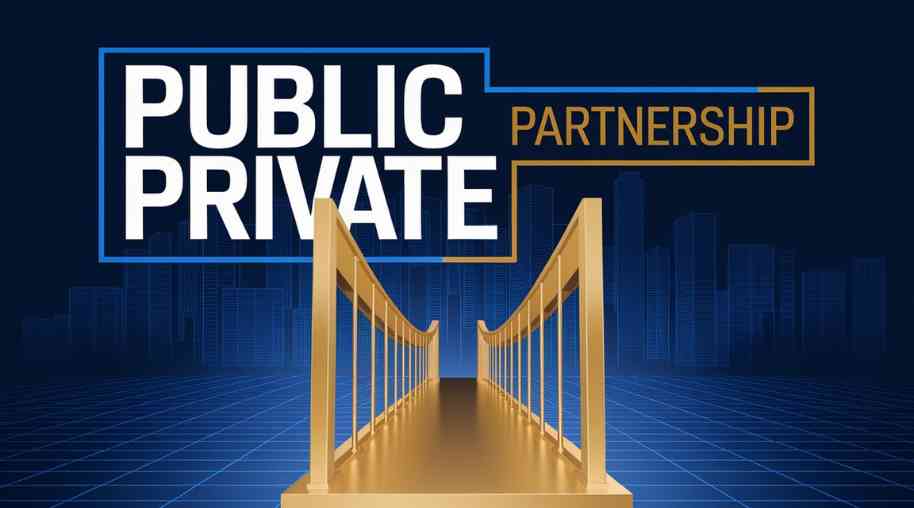PPP Full Form-Public Private Partnership
by Shashi Gaherwar
0 1936
Public-Private Partnership: A Catalyst for Economic Growth
Public-Private Partnerships (PPPs) are collaborative ventures between government and private entities to finance, develop, and manage public infrastructure and services. By combining public oversight with private innovation, PPPs drive economic growth and infrastructure development.

This article explores the concept, types, benefits, challenges, and future of PPPs in fostering sustainable development.
Understanding Public-Private Partnership (PPP)
A Public-Private Partnership (PPP) is a long-term agreement where governments partner with private firms to design, finance, build, operate, and maintain public infrastructure or services. Key features include:
- Risk Sharing: Both parties share financial and operational risks.
- Long-Term Agreement: Contracts span 15–30 years for stability.
- Performance-Based Payments: Payments tied to service quality.
- Innovative Financing: Leverages private capital to ease public budgets.
Types of PPP Models
Common PPP models include:
- Build-Operate-Transfer (BOT): Private firms finance, build, and operate before transferring to the government (e.g., highways, airports).
- Build-Own-Operate (BOO): Private entities retain ownership and operation (e.g., power, telecom).
- Design-Build-Finance-Operate (DBFO): Private sector handles all aspects (e.g., toll roads, transit systems).
- Lease-Develop-Operate (LDO): Private firms upgrade and operate leased assets (e.g., railways, ports).
Benefits of Public-Private Partnerships
PPPs offer significant advantages:
- Infrastructure Development: Enables projects without heavy public debt.
- Efficiency and Innovation: Private expertise ensures faster, high-quality delivery.
- Risk Mitigation: Shared risks and performance contracts enhance accountability.
- Economic Growth: Creates jobs and attracts foreign investment.
Challenges and Risks in PPP Projects
PPPs face challenges such as:
- Complex Negotiations: Legal and financial agreements can delay projects.
- High Investment: Large capital needs may exclude smaller firms.
- Public Opposition: Concerns over affordability spark resistance.
- Long-Term Risks: Economic or regulatory changes impact profitability.
Successful Examples of PPP Projects
Notable PPP projects include:
- Delhi Metro Rail (India): Transformed urban transport via DMRC-private collaboration.
- London Underground (UK): Modernized through government-private partnerships.
- Sydney Motorway (Australia): Toll-based model reduced congestion.
- Healthcare PPPs (Brazil): Improved hospital facilities and patient care.
The Future of Public-Private Partnerships
Future PPP trends include:
- Green PPPs: Focus on renewable energy and sustainable smart cities.
- Digital Infrastructure: Investments in 5G, broadband, and cybersecurity.
- Policy Enhancements: Transparent frameworks to attract global investment.
Public-Private Partnerships are pivotal for infrastructure and economic growth, blending public welfare with private efficiency. With clear policies and risk-sharing mechanisms, PPPs will shape resilient, sustainable economies, meeting global infrastructure demands.
Further Learning Resources
If you’re passionate about building a successful blogging website, check out this helpful guide at Coding Tag – How to Start a Successful Blog. It offers practical steps and expert tips to kickstart your blogging journey!
For dedicated UPSC exam preparation, we highly recommend visiting www.iasmania.com. It offers well-structured resources, current affairs, and subject-wise notes tailored specifically for aspirants. Start your journey today!

Share:








Comments
Waiting for your comments